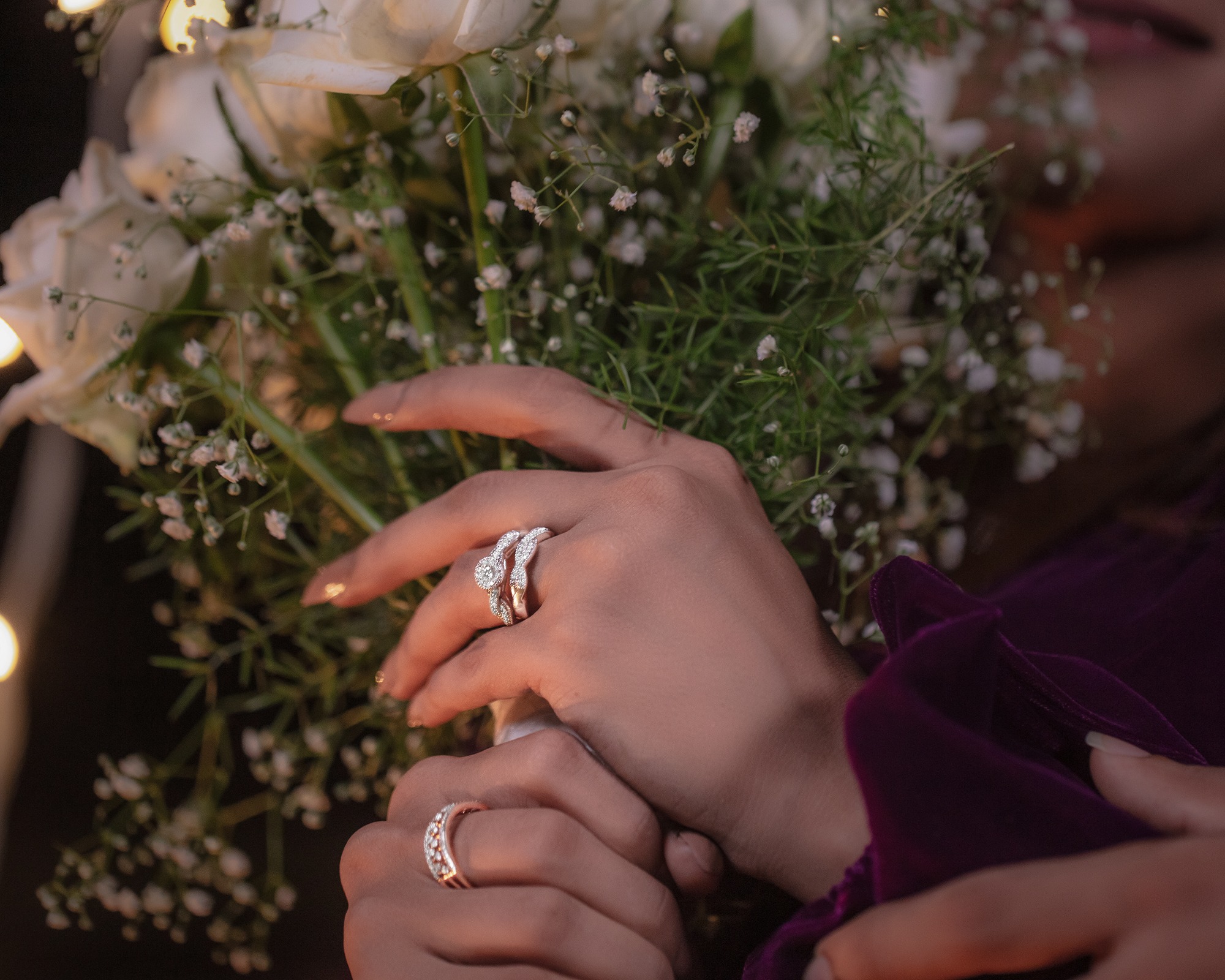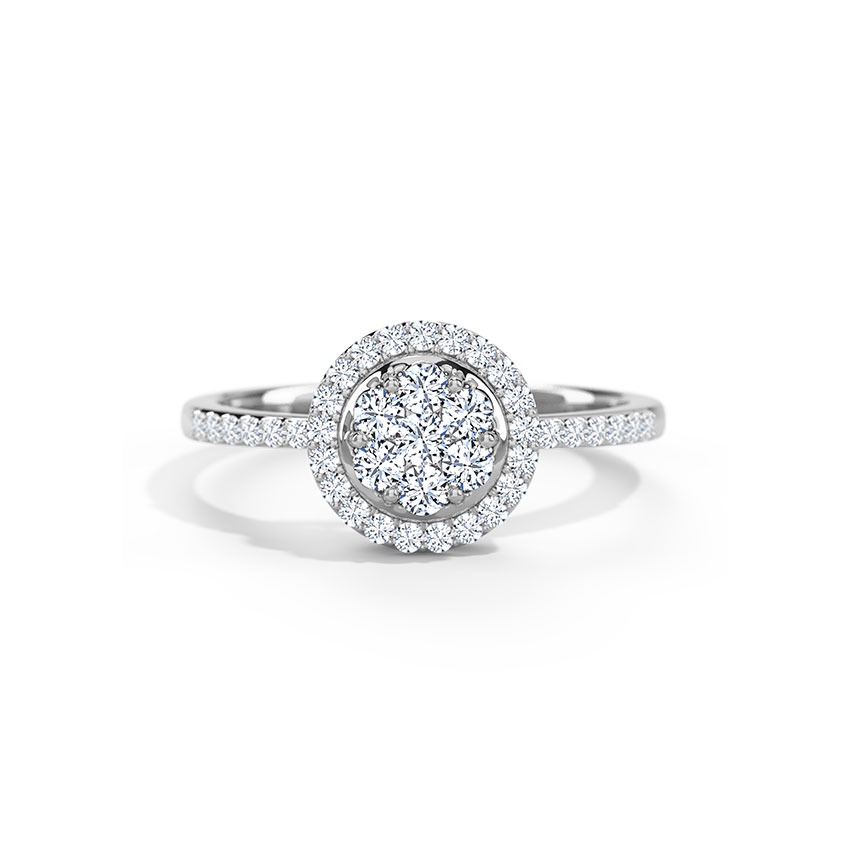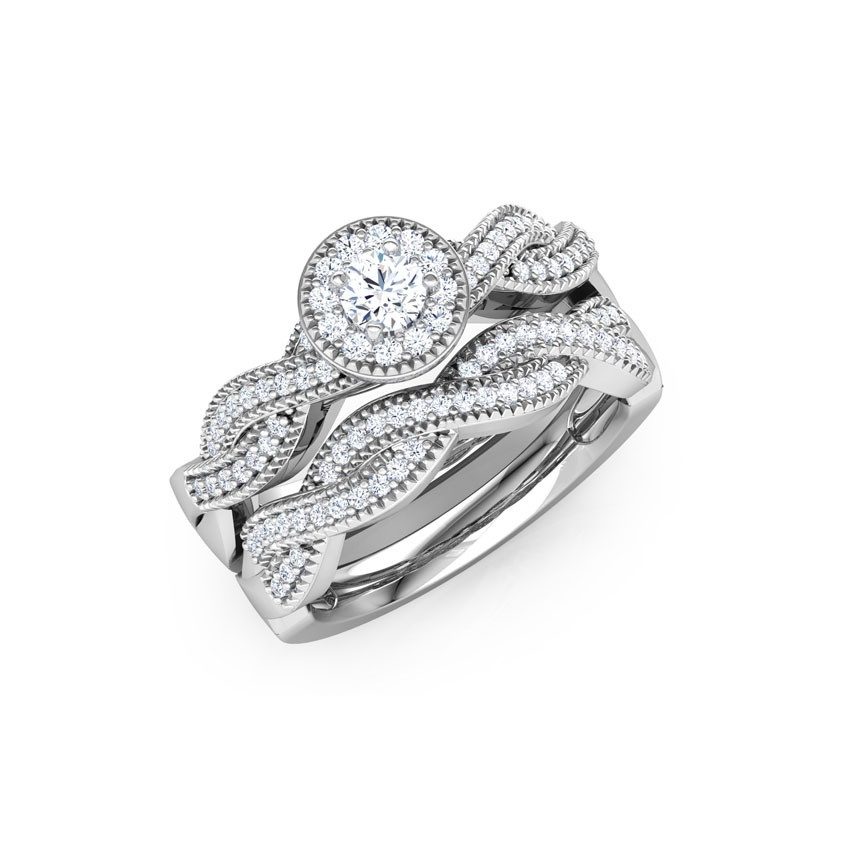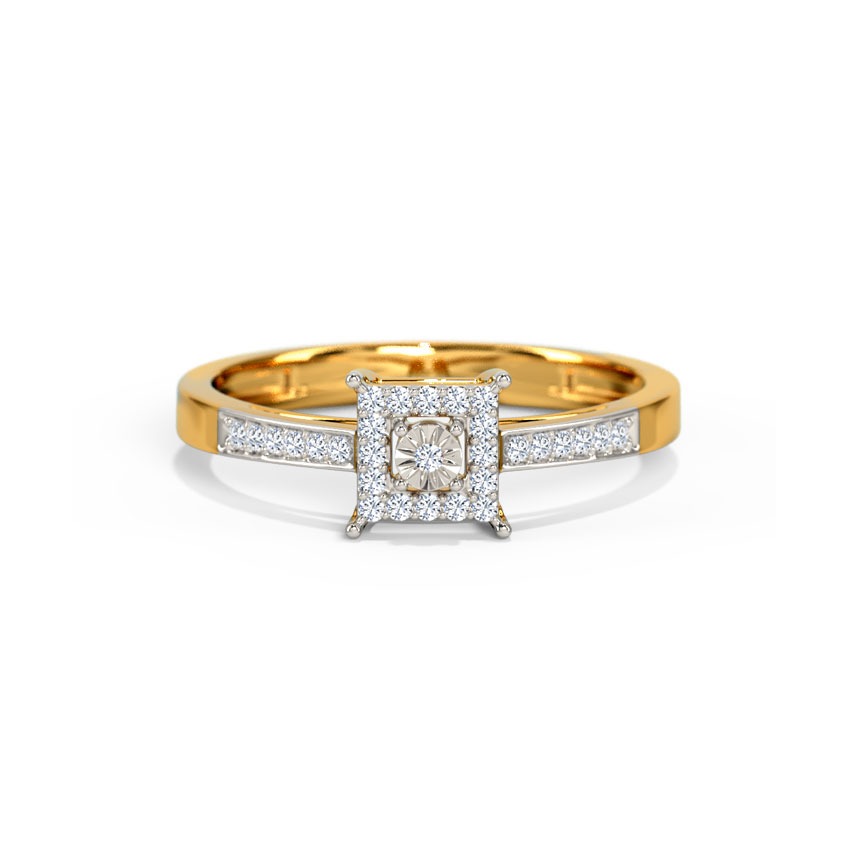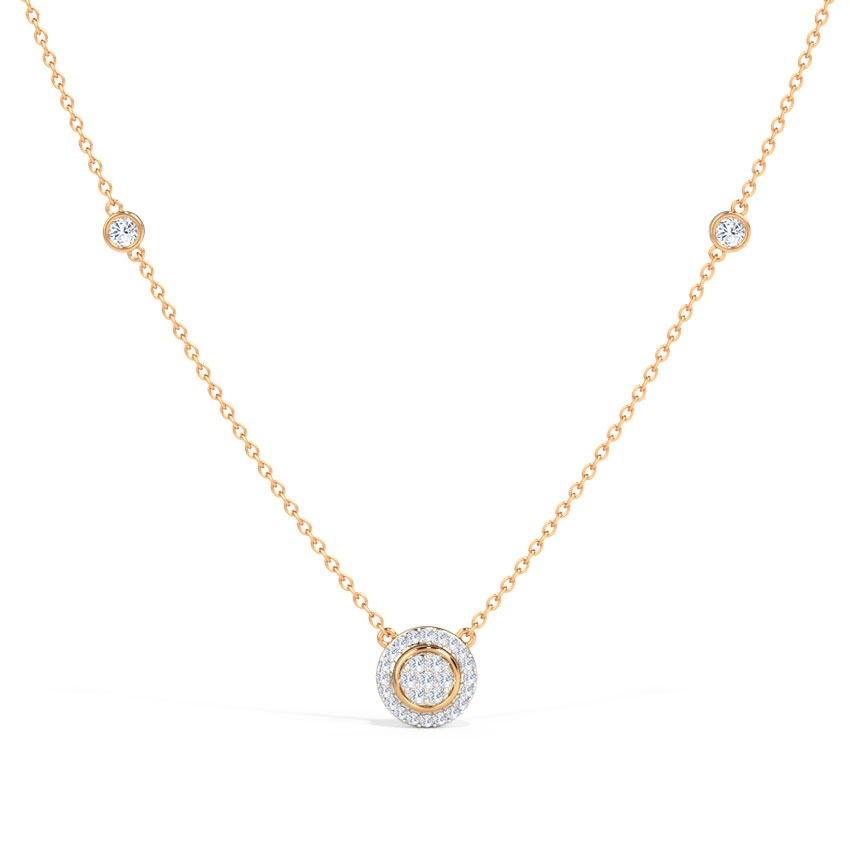There’s something enchanting about a diamond ring—the way it catches the light, reflecting your love and commitment. But over time, the dazzling sparkle may begin to dim due to everyday dirt, oils, and residues that accumulate on the surface. While professional cleanings at a jeweller are essential, you can also maintain your diamond’s brilliance at home. We will show you how you can use a few simple yet effective methods to bring back that radiant glow to your diamond ring, regardless of the setting.
Types of Diamond Settings
There are various types of diamond settings used in gold jewellery, each with its own unique characteristics and advantages. Here are some of the most common types:
Prong Setting: Prong setting, also known as a claw setting, is one of the most popular and classic methods of securing diamonds in gold jewellery. It involves small prongs (usually 4 or 6) that grip the diamond tightly, holding it securely in place while allowing maximum exposure of the stone to light. Prong settings showcase the diamond prominently, emphasizing its brilliance. An exception is the 5-prong setting, as seen in the 5 Prong Earring Mounts.
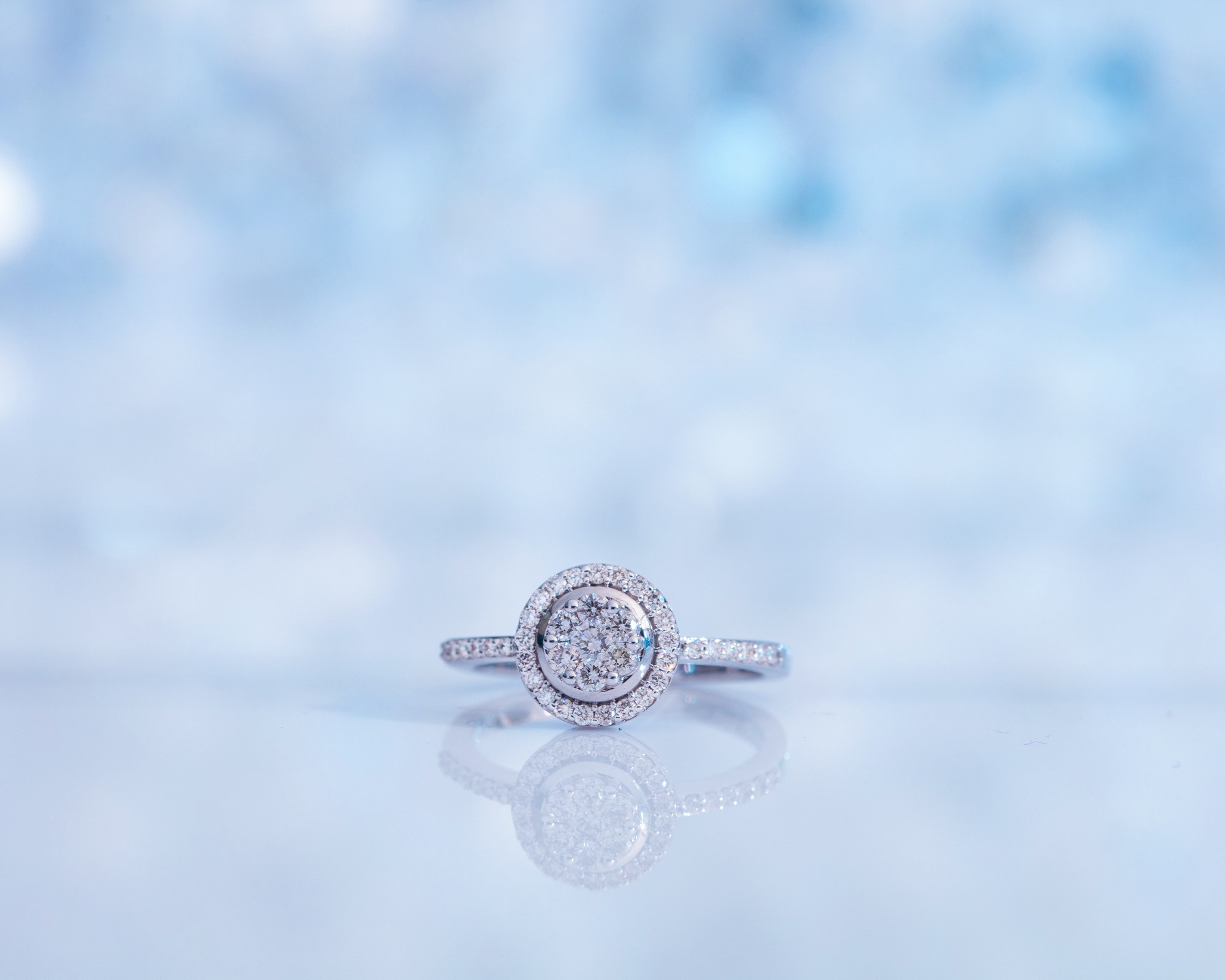

Channel Setting: Channel setting is frequently used for diamond-studded bands, such as wedding or eternity rings. In this setting, diamonds are placed closely together within a channel-like groove in the gold metal. The metal walls on either side of the diamonds hold them securely in place while creating a continuous, elegant line of sparkle, like the Katie Channel Solitaire Ring.
Pave Setting: The pave setting involves multiple small diamonds set closely together, secured by tiny prongs or beads, giving the appearance of a “paved” surface of diamonds. This setting creates a dazzling, continuous sparkle and is often used on various jewellery pieces, including rings, earrings, and pendants. A perfect example is the Classic Leaves Diamond Pendant.
Cluster Setting: The cluster setting involves a group of smaller diamonds arranged closely together to create the illusion of a larger, more prominent diamond, as you can see in the Awe Inspiring Diamond Band and the Floret Cluster Diamond Ring. This setting allows for unique and intricate designs, making it a popular choice for vintage-inspired jewellery pieces.
Flush Setting: Also known as gypsy setting, this technique involves embedding the diamond into the gold metal so that the top of the stone is level with the surface of the jewellery. This setting can be seen in the Lindy Pave Diamond Band, which offers a smooth, streamlined appearance and is typically used for small accent diamonds or gemstones.
Pressure Setting: Gold is meticulously crafted to provide minimal visibility, allowing the diamond to appear as if it is suspended in the air. It creates a mesmerizing and ethereal effect, enhancing the brilliance and beauty of the diamond.
Bezel Setting: In this setting, a thin metal rim (the bezel) surrounds the diamond, holding it securely in place.
The bezel setting offers excellent protection to the diamond and creates a smooth and sleek look, making it a favoured choice for both modern and classic designs.
These are just a few setting types. However, each diamond setting has its own aesthetic appeal and practical considerations.
And one of the practicalities involves maintenance – How do you clean your diamond rings at home?
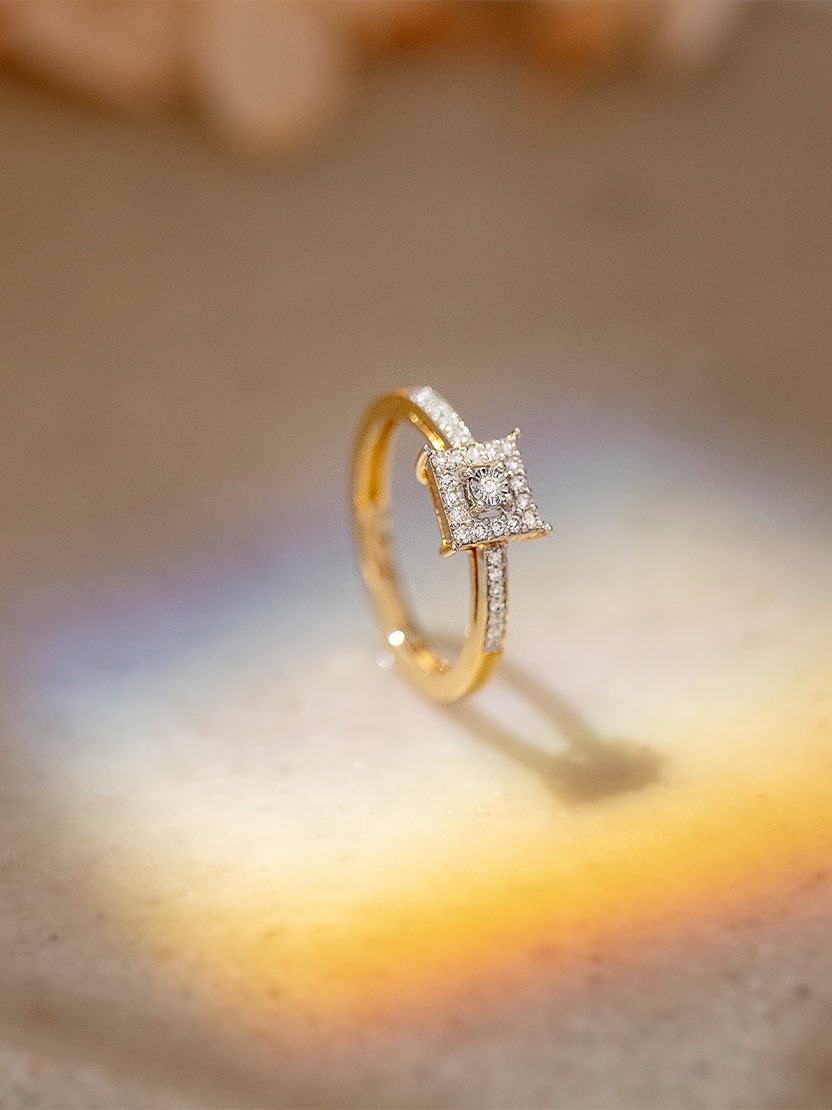
Tips to clean your diamond ring at home
The Gentle Soak: One of the easiest ways to clean diamond rings at home is by using a gentle soak.
Ingredients:
- Warm water
- Mild dish soap or baby shampoo
- A soft-bristled toothbrush
- Lint-free cloth
Steps:
- In a bowl, mix warm water with drops of mild liquid soap or baby shampoo.
- Place your diamond ring in the solution and let it soak for about 15-20 minutes.
- Gently brush the ring using a soft-bristled toothbrush or an eyebrow brush to remove any debris or dirt lodged between the diamond’s facets.
- Rinse the ring under warm running water.
- Use a lint-free cloth to dry or let it air dry.

The Baking Soda Paste: Baking soda is a natural and gentle abrasive that can help restore the brilliance of your diamond ring without causing any damage.
Ingredients:
- Baking soda
- Water
- A soft-bristled toothbrush or eyebrow brush
- Lint-free cloth
Steps:
- Mix baking soda with a little water and create a paste until it forms a thick consistency.
- Apply the baking soda paste to your diamond ring using your soft-bristled toothbrush or eyebrow brush.
- Gently scrub the ring, paying extra attention to the underside of the diamond and the setting.
- Rinse the ring under warm running water.
- Dry it with a lint-free cloth.
Important Notes:
- Avoid using harsh chemicals, bleach, or abrasive cleaners on your diamond ring, as they can damage the metal or negatively affect the diamond’s brilliance.
- Always clean your diamond ring over a bowl or a soft surface to prevent it from falling or getting lost in the drain.
- If your diamond ring has intricate details or is set with other gemstones, consider getting a professional cleaning to ensure all areas are thoroughly cleaned and maintained.
Your diamond ring deserves to shine as brightly as your love. By following these simple and safe methods to clean it at home, you can ensure that it continues to sparkle brilliantly for years to come. Remember to clean your ring regularly and supplement it with professional cleanings to maintain its beauty and keep it looking new. With just a little care and attention, your diamond ring will remain a symbol of enduring love and beauty.
Suggested reading:
Explore Other Jewellery Designs
Midi Rings, yellow sapphire ring, Mens Engagement Rings, Ring Gifts, Chain Rings, Fexible Rings, white stone ring, stackable rings, round gold ring, red stone ring, pink stone rings

